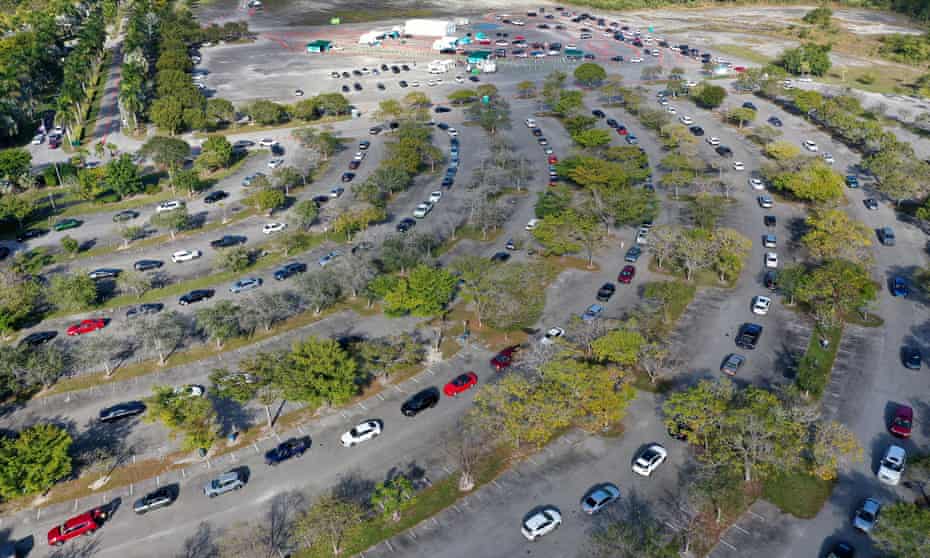Opinion: Most evangelical objections to vaccines have nothing to do with Christianity

“Some of this rapid spread has come from breakthrough infections, caused by the insidiously transmissible omicron variant. But after a ghastly year of rumor, alarm and needless death, nothing is going to erase the harsh verdict against Americans in 2021: They were granted a miracle drug, and tens of millions refused to take it (or take enough of it).
In the grab bag of reasons for vaccine resistance, the religious exemption claimed by evangelicals is perhaps the most perplexing. The default ethical stance of Christianity is the Golden Rule: “Do to others as you would have them do to you.” This principle was developed in a variety of other religious and moral traditions. (See the Babylonian Talmud: “What is hateful to you, do not do to your neighbor. That is the whole Torah.”) In the New Testament, the Golden Rule is the moral culmination of the Sermon on the Mount. And it is clear from the text that Jesus is not encouraging a calculating ethic of reciprocity. His goal is to inspire a kind of aggressive, preemptive generosity. “If anyone would sue you and take your tunic, let him have your cloak as well. And if anyone forces you to go one mile, go with him two miles.”
The proper application of this principle can be difficult, particularly when it comes to Christian participation in a just war. But the case of vaccination is not really a hard one. Here the tunic is the prick of a needle and a minuscule risk of a bad reaction. The result is a significant benefit for the vaccinated and the community they live in.
Many have come to a very different view. White evangelical Christians have resisted getting vaccinated against the coronavirus at higher rates than other religious groups in the United States. Some initial resistance came in the context of a familiar ethical debate: Did the creation of coronavirus vaccines involve cell lines produced from aborted fetuses?
The short answer is: no. A slightly longer answer is that the Johnson & Johnson vaccine is grown in fetal cell line PER.C6, which was derived from an elective abortion in 1985. “But contrary to social media claims,” Francis Collins, former director of the National Institutes of Health, told me, “there are no fetal cells or fetal DNA in the Johnson & Johnson vaccine.” The Vatican has indicated that Catholics can take the Johnson & Johnson vaccine.
“The Pfizer and Moderna mRNA are synthesized without the need for a cell line,” Collins said. “The only possible objection against those is that their effectiveness was tested in certain lab experiments that used fetal cell lines. But if that is sufficient reason to decline them, that would also need to apply to a very long list of current medicines, including aspirin and statins.”
The main resistance of evangelicals to public health measures does not concern abortion. Having embraced religious liberty as a defining cause, they are now deploying the language of that cause in opposition to jab and mask mandates. Arguments crafted to defend institutional religious liberty have been adapted to oppose public coercion on covid. But they do not fit.
More than that, the sanctification of anti-government populism is displacing or dethroning one of the most basic Christian distinctions. Most evangelical posturing on covid mandates is really syncretism, a merging of unrelated beliefs — in this case, the substitution of libertarianism for Christian ethics. In this distorted form of faith, evangelical Christians are generally known as people who loudly defend their own rights. They show not radical generosity but discreditable selfishness. There is no version of the Golden Rule that would recommend Christian resistance to basic public health measures during a pandemic. This is heresy compounded by lunacy.
It is worth recalling, as a matter of law, that someone does not need a good or theologically coherent religious-liberty claim to make a religious-liberty claim in court (absent fraud or opportunism). To deny such a claim, government needs a compelling interest advanced in the least restrictive manner. But it is hard to imagine a clearer, more fundamental example of a compelling state interest than preventing the spread of a virus that has already taken the lives of more than 800,000 Americans.
And when Christians are asserting a right to resist basic public health measures, what is the actual content of their religious-liberty claim? The right to risk the lives of their neighbors in order to assert their autonomy? The right to endanger the community in the performative demonstration of their personal rights?
This is a vivid display of the cultural and ideological trends of a warped and wasted year. It just has nothing to do with real Christianity.“




